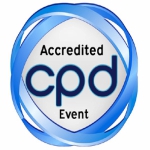Ana Belen Fernandez
Ntra Sra De Candelaria University Hospital, Spain
Title: Colistin’s dark face: The revival of polymyxin antibiotics
Biography
Biography: Ana Belen Fernandez
Abstract
Background & Objectives: Colistin (polymyxin E), an old antibiotic replaced by other less toxic antibiotics in the 1970s has been increasingly used over the last decade due to multidrug resistance in Gram negative bacteria and lack of new antibiotics. However there is a dearth of information on the pharmacodynamics and toxicodynamics of colistin and its non-active prodrug colistimethate sodium (CMS). Optimized dose regimens have not been establishment for different types of patients, especially in the critically ill population. Material & Methods: Recent reports have not described neurotoxicity associated with intravenous CMS with the exception of cases in the cystic fibrosis population, among whom neurotoxicity has manifested as paraesthesias and ataxia in 29% of patients treated (dosages in excess of 5 mg/kg per day). Our patient received intravenous CMS dosages 6 mg/kg per day. Only one case according most recent literature has described a profound encephalopathy with lack of brainstem reflexes in postsurgical patient. We report a 56 year old man who developed renal, hematological and neurotoxicity on the 5 day after administration endovenous colistin and cefepima (CMS dosages of 160 mg/8 hours, equivalent to approximately 6 mg/Kg per day). The patient has made perforated diverticulitis with descending colon resection and end colostomy left flank. On day 6 post-surgery nosocomial pneumonia by Pseudomona aeruginosa MR sensible to colistin was diagnosed. Results: Electroencephalogram was compatible with severe encephalopathy. Peripheral eosinophil count had increased to 12%. He recovered promptly after stopping the drug. Conclusions: The awareness of colistin’s potentially fatal effects must be kept in mind when using. Vigilance of the encephalopathic picture can also facilitate the diagnosis of colistin mediated neurotoxicity in a patient with altered mental status of otherwise unknown aetiology. In our opinion, the establishment of any relationships between the daily dosage of CMS, colistin levels and neurological events is needed, especially in the critically post-surgical ill patient population.

